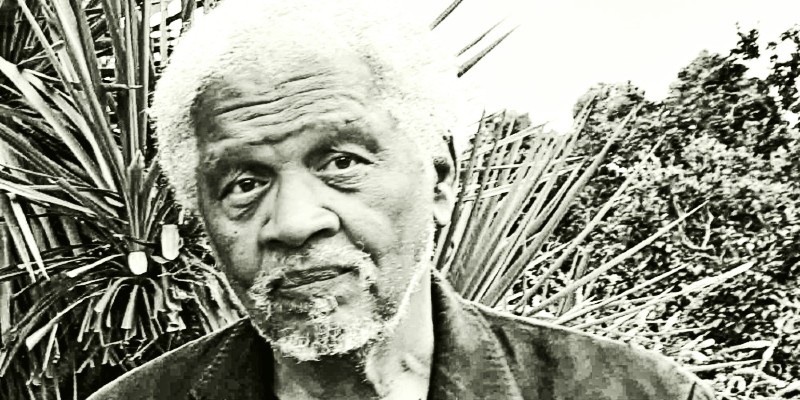
ART
FEATURE: ‘MUMBO JUMBO’ BY ISHMAEL REED: AN INFECTIOUS MASTERPIECE OF BLACK LITERATURE
By Eye Candy
April 15, 2015
It’s 1920 and Harlem is in havoc, thousands around the city are “suffering” from “Jes Grew”, the mysterious “disease” that’s got people out in the streets jumping, bouncing, and feverishly thrusting their bodies in a superhuman trance. No one can contain this epidemic; it’s sweeping across the nation, infecting thousands of people and forcing them into a sudden and unpredictable dance craze. They lose control of their bodies and can’t help but groove and shake rhythmically to its beat—this is the lively backdrop of Ishmael Reed’s mystifying 1972 novel Mumbo Jumbo.
By Damola Durosomo, AFROPUNK Contributor
Mumbo Jumbo is a satirical masterpiece, a critical analysis of Western culture and its blatant disregard for Africa and the meaningful contributions of its people. Reed shifts back and forth between various historical time periods and presents an array of quirky, archetypical characters, each symbolic of certain religious, social and political ideologies. PaPa LaBas is the head of the Jes Grew Kathedral, he calls himself a “Neo-HoDoo therapist”, who is dedicated to conserving traditional African religions and is a staunch supporter of Jes Grew. According to PaPa LaBas, Jes Grew is far from a deadly disease, rather it is an extremely pleasurable and freeing mental and physical state for those it inhabits, encouraging them to move about freely and search for truth and meaning. He makes it his mission to preserve and spread Jes Grews to all non-Westerners. He does so with the help of the radical Jes Grew organization Mu’tahfikah, a group of Jes Grew carriers who go about sharing Jes Grew and raiding museums in order to reclaim African and Asian cultural artifacts and return them to their places of origin. In Mumbo Jumbo, Papa LaBas and his crew are meant to exemplify black consciousness and a purely Afrocentric worldview, a firm belief in the idea that black people are purveyors of culture who have made invaluable contributions to society that Western culture has tried to either steal or suppress. PaPa LaBas and Mu’tahfikah attempt to counteract this by disseminating Jes Grew and awakening the masses.
On the opposite side of the spectrum, we have Hinckle Von Hampton, the owner of the sacred Jes Grew text, written by ancient Egyptians, which posses the power to control the epidemic. Von Hampton and his team, the Wallflower Order, go to great lengths to avert the increasing influence of Jes Grew. The most bizarre of these attempts is their disgraceful effort to create what they refer to as a “Talking Droid” modeled after a charming, well-educated black man that will trick black populations into believing that Jes Grew is harmful and dangerous to them. By endeavoring to subdue Jes Grew—a discernable and instrumental product of black culture—Hinkle Van Hampton serves as an emblem of the Western world and the efforts made by the media—as well as social and political institutions—aimed at obscuring the achievements of people of the African diaspora in order to maintain the flawed perception of Western cultural superiority. Jes Grew promotes black culture and enlightens its victims; making it a threat to white, Western rationalistic thought. Therefore, it must be “cured”.
Reed’s style is amusing and unconventional. Mumbo Jumbo reads almost as a movie script with seemingly random black and white photographs and catchy newspaper headlines in between. Ishmael’s brilliant use of satire gives Mumbo Jumbo the rare quality of being subtle and blunt at the same time. Through this, Reed provides remarkably sharp and thought-provoking racial commentary.
Though written in 1972, the central motifs discussed in Mumbo Jumbo are still incredibly relevant. Cultural appropriation on the part of white America is ever-present and media portrayal of young black men and women is habitually misconstrued. White people continue to dominate social, economic and political affairs and Western culture remains the prevailing global standard while the immeasurable contributions of black, African people continue to be undermined and overlooked; these are the things that need to be “cured”. There are definite parallels between the events that take place in Mumbo Jumbo and current events. Just like in the colorful streets of Harlem in 1920, a Jes Grew epidemic—a widespread condition of physical, intellectual and spiritual liberation—may be just what we need.
Words by EYE CANDY


 Mumbo Jumbo is the story of a life-giving epidemic known colloquially as “Jes Grew,” a spiritual cure-all for soullessness sweeping across the continental U.S. during the 1920s. If the book has a human hero it’s Papa LaBas, a self-anointed
Mumbo Jumbo is the story of a life-giving epidemic known colloquially as “Jes Grew,” a spiritual cure-all for soullessness sweeping across the continental U.S. during the 1920s. If the book has a human hero it’s Papa LaBas, a self-anointed 